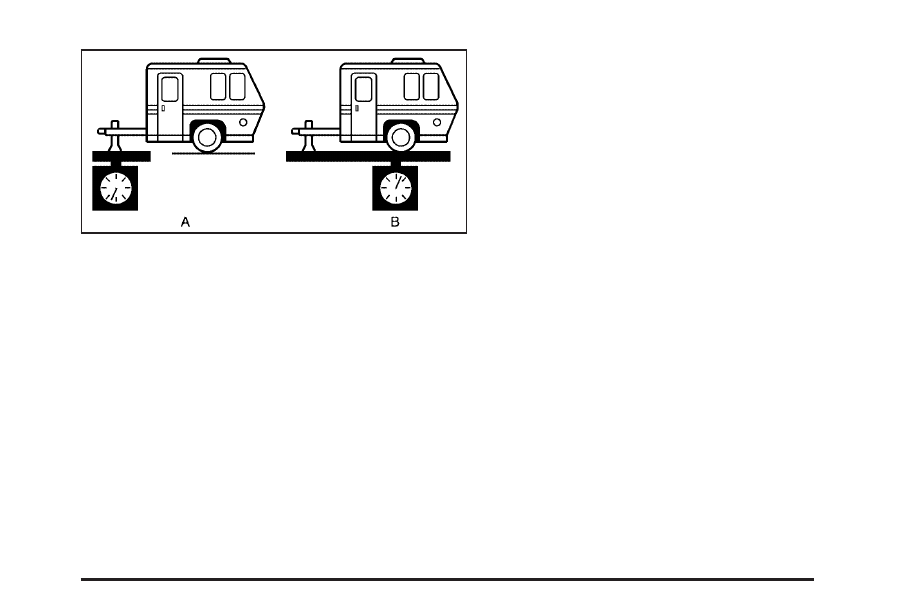Total weight on your vehicle’s tires, Hitches – Pontiac 2005 Grand Prix User Manual
Page 285

When using a weight-carrying hitch or a
weight-distributing hitch, the trailer tongue (A) should
weigh 10 to 15 percent of the total loaded trailer
weight (B).
After the trailer is loaded, weigh the trailer and then the
tongue, separately, to see if the weights are proper.
The correct weight could be achieved simply by moving
some items around in the trailer.
Total Weight on Your Vehicle’s Tires
Be sure the vehicle’s tires are inflated to the upper limit
for cold tires. These numbers can be found on the
Tire Loading Information label, that is on the inside of
the trunk lid. See Loading Your Vehicle on page 4-33.
Be sure not to go over the GVW limit for the vehicle, or
the GAWR, including the weight of the trailer tongue.
If a weight distribution hitch is used, make sure not to go
over the rear axle limit before applying the weight
distribution spring bars.
Hitches
It is important to have the correct hitch equipment.
Crosswinds, large trucks going by, and rough roads are
a few reasons why the correct hitch is needed. Here
are some rules to follow:
•
The rear bumper on the vehicle is not intended for
hitches. Do not attach rental hitches or other
bumper-type hitches to it. Use only a frame-mounted
hitch that does not attach to the bumper.
•
If any holes need to be made in the body of the
vehicle to install a trailer hitch, then be sure to seal
the holes later when the hitch is removed. If the holes
are not sealed, deadly carbon monoxide (CO) from
the exhaust can get into the vehicle. See Engine
Exhaust on page 2-33. Dirt and water can, too.
4-43